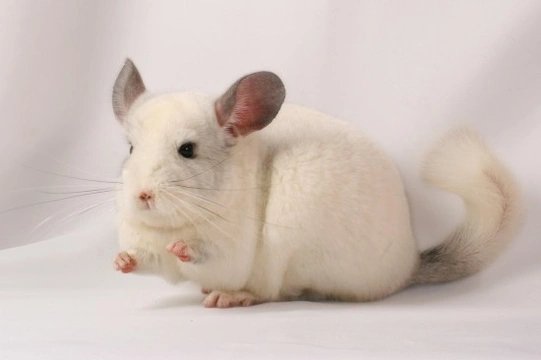
Ten Interesting Facts About Chinchillas
The chinchilla is a small rodent that is similar in appearance to the ground squirrel, but rather larger and rounder. They are native to South America’s Andes mountains, and can thrive successfully at very high altitudes. During the 19th century, they were heavily hunted for their soft, warm fur, which was used to make hats, gloves and other clothing, a practice that still occurs today in some countries.
The chinchilla is a popular and highly rewarding pet that is suitable for both adults and children, and is very entertaining, cuddly and a pleasure to keep! In the wild, the chinchilla is classed as critically endangered due to a long history of chinchilla hunting and the destruction of their natural habitats, but chinchillas breed quite happily in captivity, and they are not hard to find offered for sale as pets.
If you are interested in keeping chinchillas or already keep them as pets, or if your children are expressing an interest in keeping chinchillas, this article will introduce you to ten interesting chinchilla facts that you might not already know.
1.Chinchillas are crepuscular
It is often wrongly assumed that the chinchilla is a nocturnal animal, which is most active during the hours of darkness and will not be very lively during the day. However, chinchillas are actually crepuscular, meaning that their peak hours of activity are at dawn and dusk, during the twilight hours. Too much bright light and sun during the day can annoy your pets, so try to keep your chinchilla’s cage somewhere that is not in the glare of direct sunlight.
2. Chinchillas take dust baths
The chinchilla keeps themselves clean and in good condition by taking dust baths, and they do not take, nor need, bathing in water. Their fur is so thick and dense that water cannot penetrate it fully with ease, and it will take a very long time to dry out when wet. Taking a dust bath is the equivalent of using a dry shampoo, and they will happily play and roll around in the provided dirt bath in their cage to get clean!
3. Chinchillas are very sensitive to heat
In their natural wild environment, the weather is dry and cool, and they are very sensitive to hot temperatures and overheating. The ideal temperature range for the chinchilla is between 15 and 25 degrees Celsius, and if the weather is hotter than this, you will need to provide some fans or another means of cooling your pet’s cage down. Chinchillas are very prone to heatstroke in hot weather, something that you should be very aware of.
4. Chinchillas can navigate using their whiskers!
While the eyes of the chinchilla are relatively large and well suited to seeing in dim light and dusk, their retinas are actually not very well developed, and the chinchilla’s long whiskers actually help them to navigate around their world. The nerve endings in their whiskers are very sensitive, like those of the cat, and can provide feedback to the chinchilla about their environment.
5. Chinchilla’s teeth never stop growing
Like most rodents, the teeth of the chinchilla are constantly growing, and can grow by as much as a foot within a year! In order to keep their teeth at a safe level, they need constant access to things that they can gnaw on and chew to file down their teeth, and will chew on most things that they come across! It is important to ensure that you chinchilla-proof any rooms that you let your pets lose in, as they will also chew hazards such as electrical cords if they can get to them!
6. Chinchilla fur is the softest on earth!
The chinchilla’s signature fur is the softest of any land mammal, making them infinitely strokable, but also, unfortunately, popular for their pelts to make gloves and outerwear! Each follicle of the chinchilla coat grows around 50-80 hairs, as opposed to humans, who only grow two or three.
7. Chinchillas can slip their fur
If they feel threatened or under attack, your chinchilla can spontaneously “slip” their fur, which means that they shed their fur in large quantities and big clumps as a defence mechanism that will give your chinchilla the chance to get away from their perceived predator.
Fur slipping and significant moulting may be signs of stress or unhappiness in your pet, so if you observe this behaviour in your own chinchillas, try to get to the root of the problem.
8. Chinchillas can reproduce from a young age
Chinchillas reach sexual maturity at just eight weeks old, which is why it is vital to separate males and females early if you have a litter, to prevent further reproduction!
9. Chinchillas use their tails for balance
Chinchillas are very lively, acrobatic little animals that love to jump around, run and play. Their tails form an important part of their balance and ability to keep their footing on all terrains, as well as providing stability on uneven surfaces.
10. Chinchilla groups are very social and compassionate
Chinchillas do not thrive when kept on their own, and need to live in pairs or small groups in order to be happy. Chinchillas are distinct from most other rodent species due to the ways in which they demonstrate their care for their young and for each other; male chinchillas will not attempt to eat a litter, and will actually even baby sit their own and other’s offspring!
If a mother chinchilla is unable to produce milk to feed her kits, it is not uncommon for another unrelated female to adopt the babies and care for them as if they are her own. Chinchillas are also very loving and friendly with people when properly socialised, making them highly appealing and rewarding as pets.



